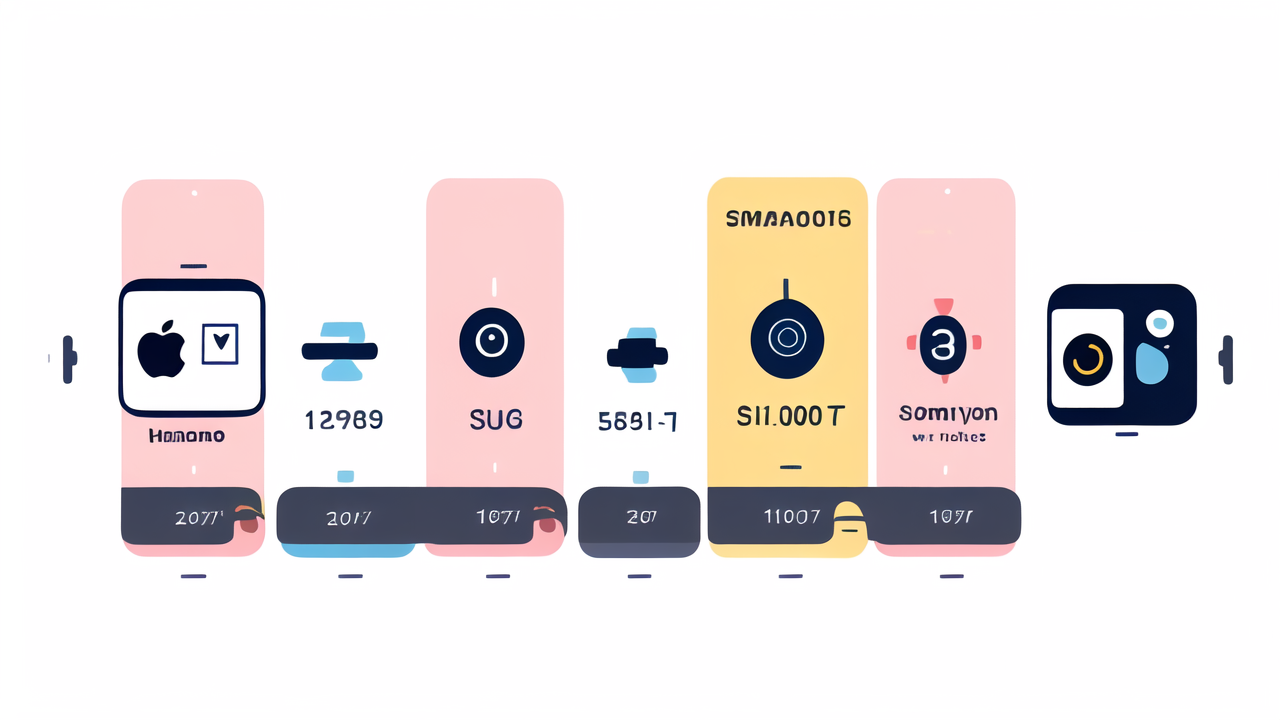The Evolution of Wearable Fitness Technology in the United States
A Brief History of Fitness Wearables
Wearable fitness technology has come a long way since its inception. The journey began with simple pedometers in the 1960s. These devices counted steps and helped people track their daily activity. In the 1980s, heart rate monitors became popular among athletes. They allowed for more precise training and performance tracking.

The real revolution started in the early 2000s with the introduction of smart wearables. Fitbit launched its first clip-on tracker in 2009. It could monitor steps, sleep, and calories burned. This marked the beginning of a new era in personal fitness tracking. Soon after, other companies like Garmin and Apple entered the market with advanced devices.
Major Innovations in the Fitness Wearable Space
The fitness wearable space has seen numerous innovations over the years. GPS tracking was a game-changer for runners and cyclists. It allowed them to map their routes and track distances accurately. Waterproof designs made it possible to use wearables for swimming and other water sports.
More recent innovations include:
- Advanced heart rate monitoring using optical sensors
- Sleep tracking with detailed sleep stage analysis
- Stress level monitoring through heart rate variability
- Blood oxygen saturation (SpO2) measurement
- ECG capabilities for detecting irregular heart rhythms
These features have transformed wearables from simple step counters to comprehensive health monitors.
The Impact of Smart Devices on Physical Activity
Smart wearables have significantly influenced how people approach physical activity. They provide real-time feedback and motivation, encouraging users to be more active. Many devices offer personalized activity goals and reminders to move throughout the day.
Studies have shown that wearing a fitness tracker can increase daily step count by an average of 2,000 steps. This can lead to improved cardiovascular health and weight management. Wearables also make it easier for people to track their progress over time. This helps in setting and achieving long-term fitness goals.
Moreover, the social aspects of many fitness apps connected to wearables create a sense of community. Users can participate in challenges, share achievements, and motivate each other. This social element has proven to be a powerful motivator for maintaining an active lifestyle.
Analyzing Current Trends in Wearable Fitness Technology
Popularity and Adoption Rates Among Consumers
Wearable fitness technology has seen a surge in popularity in recent years. According to industry reports, the global wearable technology market is expected to reach $118.16 billion by 2028. This growth is driven by increasing health awareness and the desire for personalized fitness tracking.

In the United States, adoption rates have been particularly high. A 2021 survey found that:
- 21% of Americans own a fitness tracker
- 18% own a smartwatch with fitness tracking capabilities
- Usage is highest among adults aged 18-34
The COVID-19 pandemic has further accelerated adoption. Many people turned to wearables to monitor their health and maintain fitness routines during lockdowns.
The Role of Wearable Technology in Daily Fitness Regimens
Wearable technology has become an integral part of many people's daily fitness routines. These devices offer continuous monitoring of various health metrics. This allows users to make informed decisions about their activity levels and overall health.
Key ways wearables are used in daily fitness:
- Setting and tracking daily step goals
- Monitoring heart rate during workouts
- Tracking calories burned throughout the day
- Analyzing sleep patterns for better recovery
- Providing guided workouts and exercise suggestions
Many users report that having access to this data motivates them to stay active and make healthier choices.
Integration with Lifestyle and Health Apps
Wearable fitness technology doesn't exist in isolation. It's increasingly integrated with a wide range of lifestyle and health apps. This integration allows for a more comprehensive approach to health and wellness.
Popular integrations include:
- Nutrition tracking apps for calorie counting
- Meditation apps for stress management
- Period tracking apps for women's health
- Hydration reminder apps
- Social fitness apps for community challenges
This ecosystem of connected apps and devices provides users with a holistic view of their health. It allows for better correlation between different aspects of lifestyle and overall well-being.
The Future of Wearable Fitness Technology in the Health and Wellness Industry
Upcoming Innovations and Technological Advancements
The future of wearable fitness technology looks promising, with several exciting innovations on the horizon. One major trend is the development of more advanced biosensors. These will allow for even more precise health monitoring.

Some anticipated advancements include:
- Non-invasive glucose monitoring for diabetics
- Continuous blood pressure monitoring
- Sweat analysis for hydration and electrolyte balance
- Advanced AI for personalized health insights and predictions
- Integration with augmented reality for immersive fitness experiences
Wearables are also likely to become more discreet and comfortable. We may see a shift towards smart clothing and accessories that seamlessly integrate technology.
Potential Challenges and Considerations
While the future of wearable fitness technology is bright, there are challenges to consider. Privacy and data security remain major concerns. As these devices collect more sensitive health data, protecting this information becomes crucial.
Other potential challenges include:
- Accuracy and reliability of measurements
- Battery life and charging convenience
- Affordability and accessibility for all demographics
- Over-reliance on technology for health decisions
- Potential for increased anxiety due to constant health monitoring
Addressing these challenges will be crucial for the continued growth and acceptance of wearable fitness technology.
The Role of Wearable Tech in Shaping Health Policies
Wearable fitness technology has the potential to significantly impact health policies. The vast amount of data collected by these devices could inform public health strategies and personalized medicine.
Possible implications for health policies include:
- Integration of wearable data into electronic health records
- Insurance incentives for maintaining healthy lifestyle habits
- Early detection and prevention of chronic diseases
- More accurate population health data for policy-making
- Improved remote patient monitoring for healthcare providers
As wearable technology becomes more advanced and widespread, its influence on health policies is likely to grow. This could lead to more data-driven and personalized approaches to public health.




Leave a comment
This site is protected by hCaptcha and the hCaptcha Privacy Policy and Terms of Service apply.